Alma Student Information System (SIS) recently unveiled updates to its SIS platform, providing new features making it easier for districts to onboard schools and use third-party apps.
Over the past 18 months, professors have evolved curriculums, students have adapted to hybrid and online learning, and higher education institutions have implemented technology that supported and enhanced digital and hybrid classroom settings. As we approach a new school year, these methods have become an integral part of the new learning experience.
Artificial intelligence solutions company Brain Corp announced recently that Denver Public Schools has selected a series of BrainOS-powered robotics scrubbers to help keep its schools clean and sanitary. The self-driving floor cleaners were manufactured by the Tennant Company, and the school system said it hopes to make use of them to allow facility management employees more time to address other tasks.
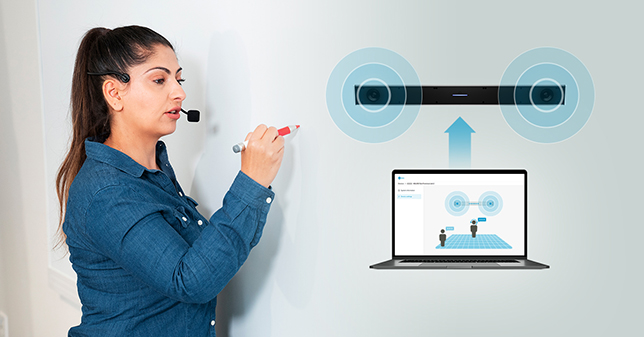
Audio conferencing solutions company Nureva Inc. recently announced that it has added a Voice Amplification Mode to two of its audio conferencing systems. The addition to the HDL300 and Dual HDL300 systems will support both in-room amplification of the instructor’s voice as well as full-room pickup of other voices in the classroom for the sake of remote students.
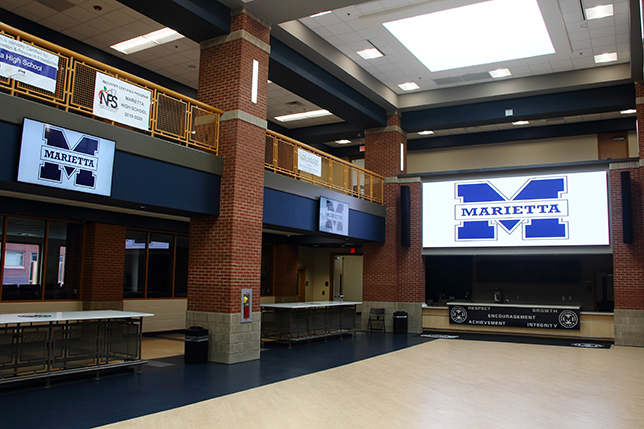
New programs prepare students for real-world careers and college pursuits, with LG displays used for teaching, collaboration, highlighting student works and school-wide digital signage
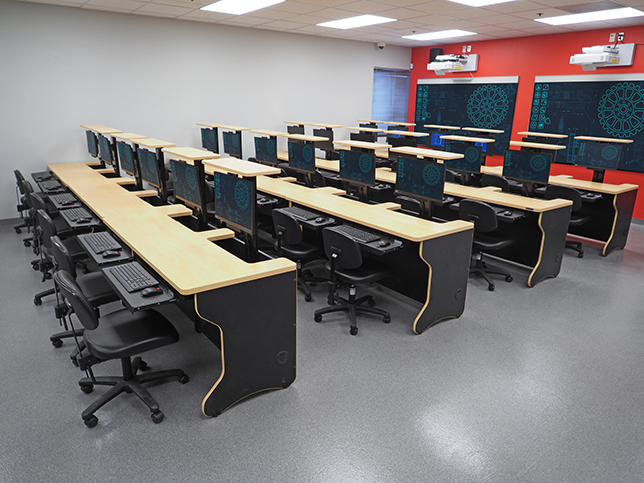
Walk into the Makerspace at New Jersey Institute of Technology (NJIT) and you will see Computer Numerical Control machinery; waterjet cutters; high-tech 3D printers for metal and plastic; and whiteboards full of ideas, to-do lists, and calculations. While the spacious downstairs is filled with machinery for students to bring theory into practice, the brand new, multi-purpose classroom upstairs is where much of the teaching and learning will prime students for success.

Viscor, a brand of Leviton Lighting, has announced that it is launching the Visioneering LRTH-DFX luminaire lighting unit featuring 365DisInFx UVA technology.
ASI Group, a manufacturer of restroom accessories, toilet partitions, visual display products and lockers, has announced the launch of its BIM Content Library for use by construction, architecture and design professionals. The library will allow these professionals access to a wide variety of practical design tools.
Facility management application solutions provider MasterLibrary recently added a new product to its collection of K–12 solutions. ML Drawings, an interactive floor plan tool, lets users add building assets represented by digital icon stamps to digital floor plans of educational facilities.
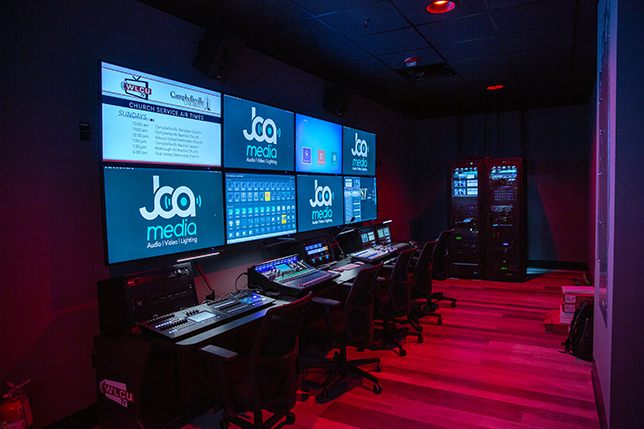
Campbellsville University in Campbellsville, Ky., has partnered with JCA Media to select LynTec, an electrical power control solutions manufacturer for professional audio, video and lighting (AVL) systems, to supply products for the university’s broadcast studios. Integration firm JCA Media has already installed LynTec’s lighting control panels in other buildings around campus.

Through the month of June, BenQ is offering schools an amazing deal. The visual display producer is selling the $4,999 Google Jamboard for $999, and it comes with a free license for Google Classroom, which the company valued at $600.

K–12 schools and colleges issue ID cards to students, faculty, staff, and sometimes even visitors to campus. The logistics of creating and printing these cards—especially Smart Cards with technical capabilities—are more complicated than you might think. Sponsored by HID Global.
K–12 school districts and service providers throughout the country have stepped up heroically to try and facilitate remote learning during the pandemic. And despite hardships, giving teachers access to online learning platforms for creating and organizing lesson plans has begun opening the door to new pedagogies and innovative software tools that improve learning outcomes both in and out of the classroom.

As students come back to new and improved classrooms, STEM learning will become paramount in learning experience design. School shutdowns have hit science classes hard and may lead to widening achievement gaps in STEM fields. As institutions of learning reopen, science, computer and innovation labs should be the pillars of infrastructure improvements.
Education technology solutions providers Trox and Tierney announced recently that the two companies will merge to form Trox + Tierney. Combined, the two organizations bring 80+ years of experience and more than 750 skilled employees to the market.
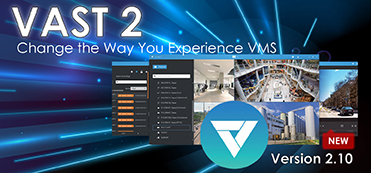
IP surveillance solutions provider VIVOTEK has released an update to its VAST 2 IP Video Management Software.
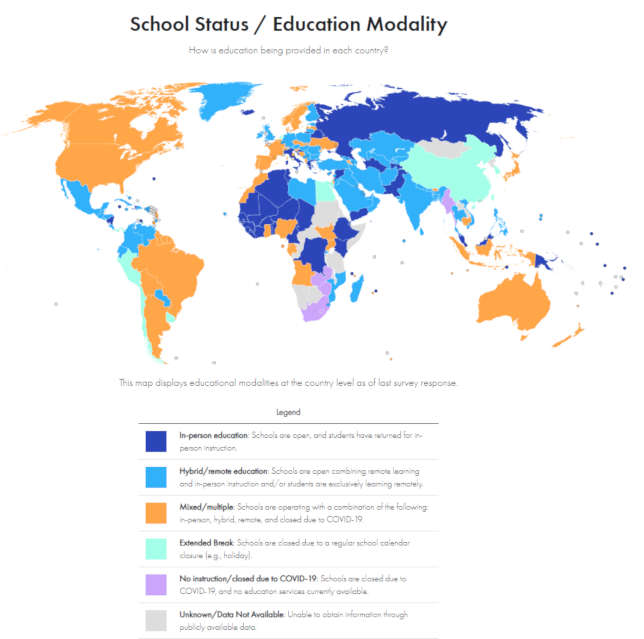
A new global education recovery tracker project developed by Johns Hopkins University's eSchool+ Initiative, the World Bank and UNICEF reveals the progress of schools around the world in the fight against COVID-19.
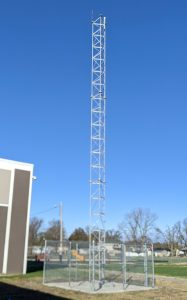
An Illinois district has installed a $300,000 private LTE network to deliver internet connectivity to students. Collinsville Community Unit School District #10 worked with IT solutions provider STEPcg to address the needs of about 500 students in the area.
A cyberattack forced a Massachusetts school district to close for a day, just as kids were about to return to the classroom, and then revert to remote learning for most grades. Haverhill Public Schools made a public announcement when the district computer system was hit with a ransomware attack.
UV-C disinfection solutions provider INVZBL has launched a new line of products dedicated to reducing the risk of virus transmission through shared devices in K-12 schools.
Western Illinois University, located in Macomb, Ill., is set to debut its Digital Rec Center (DiRC) in fall 2021. The center will play home to the university’s eSports team and offer students a space for competitive gaming, console gaming, a virtual reality station, and more.
Purdue Online has recently launched a Disaster Recovery Certificate course for construction professionals. The course was developed as a means to educate workers in the construction industry on the nuances between disaster recovery work and normal construction practices.
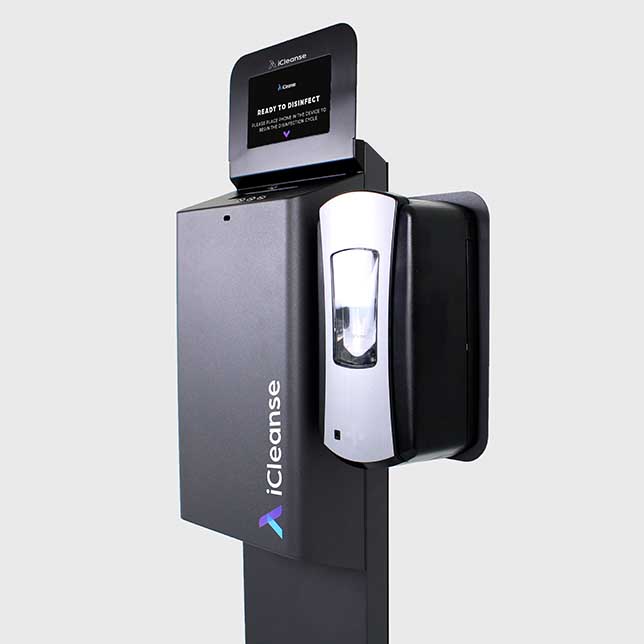
Device sanitation solutions company iCleanse recently launched its newest product, the iCleanse Swift UV. The Swift UV serves as a chemical-free UV-C disinfection station for mobile phones and was created for a wide variety of markets including airports, retail stores, restaurants, doctors’ offices, corporate offices, higher education environments, and more.
Web security platform ContentKeeper announced this week that it’s launching a generation cloud filtering and security platform designed specifically for use in K-12 educational environments. The ContentKeeper Cloud helps teachers and administrators maintain the balance between letting students explore the Internet to access potentially valuable content and basic student security and safety.
vFairs, a hybrid and virtual event platform, will be offering its services to public schools, colleges, and universities as the second graduation season of the COVID-19 pandemic draws closer.
A news release from CatchOn, a data analytics and application monitoring solution used by K-12 schools, reveals that digital engagement among students has increased during the pandemic. A comprehensive data analysis suggests that even if districts saw a sharp dip during the beginning of remote learning, the level of engagement has since spiked above normal, pre-pandemic standards.
An upstate New York public school recently saw a major upgrade to its AV capabilities through a partnership with Ashly Audio and Advance Sound Company. Stissing Mountain Junior/Senior High School of the Pine Plains Central School District in Pine Plains, N.Y., updated its suite of audio amplification and control solutions to serve not just the school’s students and faculty, but the wider community.
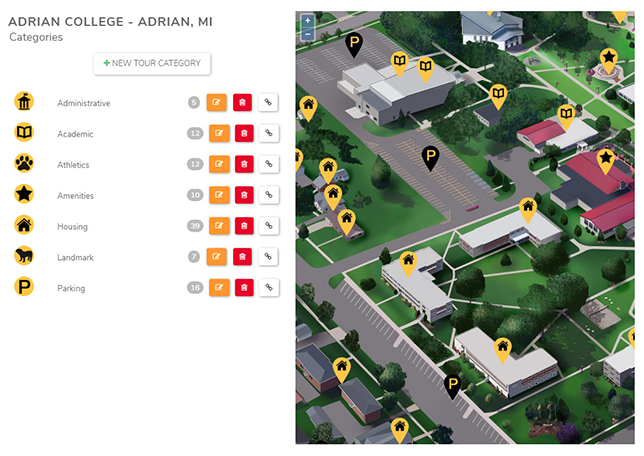
A higher education technology company with a content management system has bought another company that produces online campus maps. Modern Campus, which produces Omni CMS, has acquired nuCloud, which develops customizable, interactive campus maps and virtual tours.
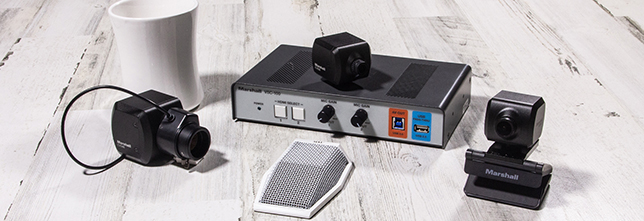
Marshall Electronics and MXL Microphones have recently reintroduced a line of user-friendly cameras and microphones for use in remote learning. Products like the Marshall CV503-U3 camera and the MXL AC-44 microphone offer relatively simple plug-and-play solutions to help improve faculty and students improve the audio and visual quality of their learning experiences.